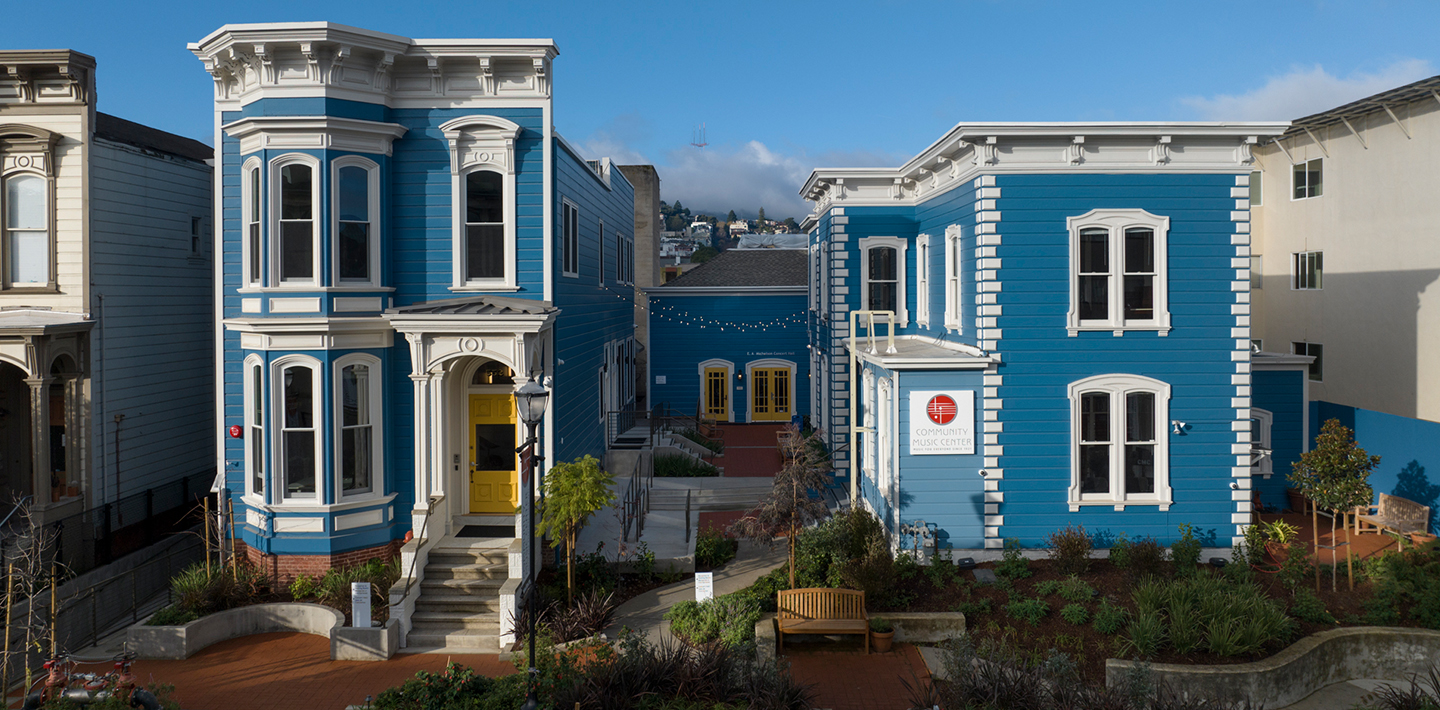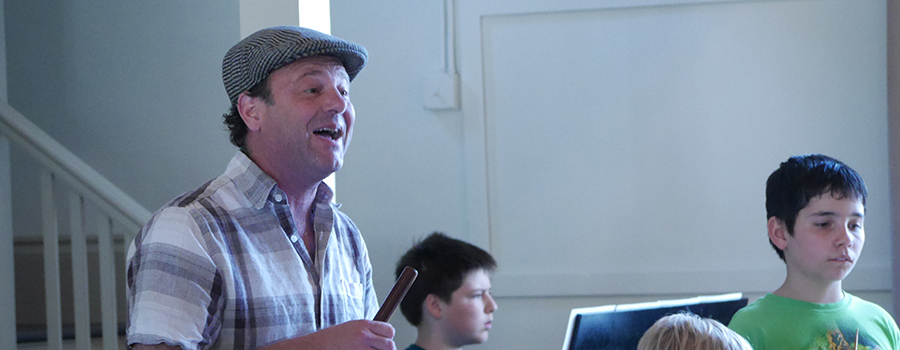Tregar Otton began teaching at CMC in 2000, and in the 17 years he’s been here, has become more and more involved as a CMC faculty member. Tregar now teaches fiddle and violin at both branches, leads CMC’s Cuban Salsa Ensemble, and teaches and arranges for CMC’s Mission District Young Musicians Program, Camp CMC, and our new Mariachi Program in the San Francisco public schools.
Tregar began his classical training at age four. At sixteen, he was the youngest member of the Berkeley Symphony and played under Maestro Kent Nagano. Tregar has been performing professionally since then. He is now musical director of Orquesta la Moderna Tradición (a Cuban “orquesta”) and The Shams Eire (an Irish trad/rock group). Tregar performed for decades with Potaje (Flamenco/Latin ensemble), and Los Cenzontles (Mexican trad and modern music). Tregar has performed and toured with various Flamenco dance troupes in including La Tania and Theatre Flamenco. He has also worked in New York with Chocolate Armenteros, Patato Valdes, Juan Carlos Formel, and Orquesta Broadway.
Tell me about your musical life. What’s led you here?
I grew up in Corpus Christi, Texas, where I would guess that about 50% of the population had Tejano or Mexican roots. There was a lot of Mariachi music there, and a group practiced in the garage beneath our apartment for a spell. I listened to a lot of country and folk music at that time – we played it around the fire. I started playing violin early, at four years old, but I studied only classical music then. We moved to Laguna Beach when I was in junior high, then to San Francisco for high school, where I went to School of the Arts (SOTA).
As I started to learn Spanish in high school, I began listening to salsa more seriously. But I really loved classical music as a teenager. I was heavily into the opera. I would buy standing room tickets at least ten times a year and I’d bring the scores. Mozart and Italian opera were my favorites. I met Kent Nagano when I was in the Oakland Youth Symphony (OYS). He took me under his wing and became my mentor. I wrote a concerto for drum set and string orchestra for the OYS when I was 16. It was after that that Nagano asked me to join the Berkeley Symphony.
The Berkeley Symphony played a lot of new music, and I think this made me more more curious about other styles of music. For example, we once played a “Zappa ballet” with Frank Zappa and his family. I ended up spending the next summer at the Zappa household in LA. After practicing my violin for hours every day for weeks, Frank finally brought me into his studio to show me a few things.
The first time I played dance music, I got hooked. Most of the music I really like is dance music. Even the jazz music I like is swing. The audience is taking part in the music and you know if you are doing a good job. I started playing Cuban Music in a class led by Guillermo Céspedes at La Peña Cultural Center, then I played in Conjunto Céspedes.
What draws you to Irish and American traditional music you play? And to Latin music?
Well, I do have some Welsh and Irish in my background, but I don’t know if that’s why I’m drawn to the music. I have always looked elsewhere for my musical influences.
When it comes to Latin music, I love how music of the Americas is so inter-connected. Salsa music in the 70s in New York was sung in Spanish by immigrants but there were always gringos involved, too. They came together through common musical interests and I was drawn to that. The music was different from that of my heritage, but I have come to call it my own.
Also, Cuban music is one of the only musics that uses violin like a percussion instrument. It’s part of the rhythm section. I always wanted to be a percussionist, so this music really resonated with me.
Tell me about your teaching style.
I believe that you have to teach the instrument first (in my case, the violin), then dive into genres. That said, I often use traditional American music as exercises in which students can learn technique. Fiddle music was really made for the fiddle, but it is also sometimes good music for classically oriented students to start with. Using a classical method, I can draw from trad repertoire. I like to say, “Fiddle music sounds hard, but is easy to play. Classical music sounds easy, but is hard to play.”
Also, my style of teaching prioritizes having fun from the start. I like to get people playing songs as soon as possible, especially kids.
We know that your oldest student, Remo del Tredeci, is now 97. He’s been in the news several times! Tell me about what it’s like to teach students of different ages.
I love working with a variety of ages. My students range from 7 – 97 years old, and I find that each one has something unique to work on. I try to tailor the lessons to each student’s needs, and often write out exercises or pieces that address them. The physical limitations that some older adults face can make them as challenging to work with as youngsters. For example, they may have arthritis. But my older adults are more willing to do the work in order to accomplish a goal, especially students in their 80s and up. Young children may not have developed motor skills yet, but a wonderful thing about teaching children is that they don’t have expectations that get in their way like adults sometimes do. I think teens like the real-ness of playing of instrument, which is nice to be around.
Back to Remo, I feel honored to be in the same room with him. We’ve had a weekly lesson for at least 15 years now. I love hearing his opinions and his stories. We have a pretty good friendship now.
What is the essential ingredient for making a CMC education powerful?
It’s hard to reduce it to one, but if I had to, it would be the love of music. Having a love of music yourself, and instilling a love of music in our students is really important.



